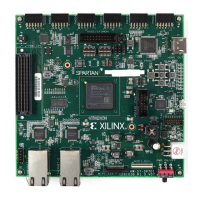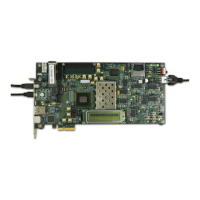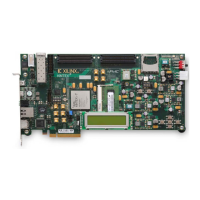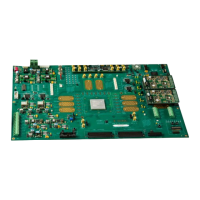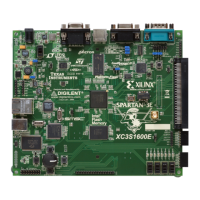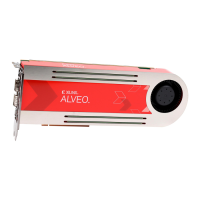7 Series FPGAs GTP Transceivers User Guide www.xilinx.com 235
UG482 (v1.9) December 19, 2016
SelectIO Usage Guidelines
SelectIO Usage Guidelines
Because a GTP transceiver's performance can degrade in an environment flooded with SelectIO™
activity, it is important to have guidelines for SelectIO usage that minimize the impact on GTP
transceiver performance.
The following guidelines must be followed when routing GTP Transceiver data signals on the PCB:
• Eliminate routing of GTP Transceiver signals and SelectIO signals on adjacent layers. Be
aware of the potential of broadside coupling if these signals are routed on adjacent layers.
• Maintain isolation of the return current paths for both the SelectIO signals and the GTP
Transceiver signals including both traces and vias.
• The power islands for the GTP Transceivers are also a potential source for SelectIO induced
noise. SelectIO signals should not be routed over the GTP power islands.
Specific SelectIO Guidelines Pertaining to the FGG676 Package
• To minimize the impact to GTP performance from SelectIO in adjacent banks, SelectIO banks
16 and 35 should be avoided for line rates equal to or above 6 Gb/s.
• If SelectIO banks 16 and 35 must be used, then it is recommended to reduce the number of
SelectIOs used in these banks and the following selectIOs are prohibited:
• Bank 16: F17, F18, F20, G15, H14, H15, A17, A18, A19, B17, B19, C17, D16, D18, E16,
E18, F15, F19
• Bank 35: K8, J8, J6, J5, J4, H9, H8, H7, H6, H4, G9, G8, G7, G6, F8, F7, E6, D6
PCB Design Checklist
Table 5-14 is a checklist of items that can be used to design and review any 7-Series GTP transceiver
PCB schematic and layout.
Table 5-14: GTP PCB Design Checklist
Pins Recommendations
MGTREFCLK0P
MGTREFCLK0N
MGTREFCLK1P
MGTREFCLK1N
• Use AC coupling capacitors for connection to oscillator.
• For AC coupling capacitors, refer to Reference Clock, page 224. The recommended value for
LVD S is 100 nF.
• Reference clock traces should be provided enough clearance to eliminate crosstalk from adjacent
signals.
• Reference clock oscillator output must comply with the min/max input amplitude requirements
for these input pins. See DS181
, Artix-7 FPGAs Data Sheet: DC and Switching Characteristics.
• If reference clock input is not used leave the associated pin pair unconnected.
MGTRXP0/MGTRXN0
MGTRXP1/MGTRXN1
MGTRXP2/MGTRXN2
MGTRXP3/MGTRXN3
• Use AC coupling capacitors for connection to transmitter. The recommended value for AC
coupling capacitors is 100 nF.
• Receiver data traces should be provided enough clearance to eliminate crosstalk from adjacent
signals.
• If a receiver is not used connect the associated pin pair to ground.
•See RX Analog Front End, page 126.
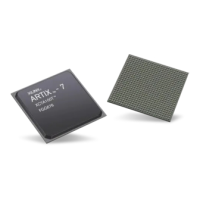
